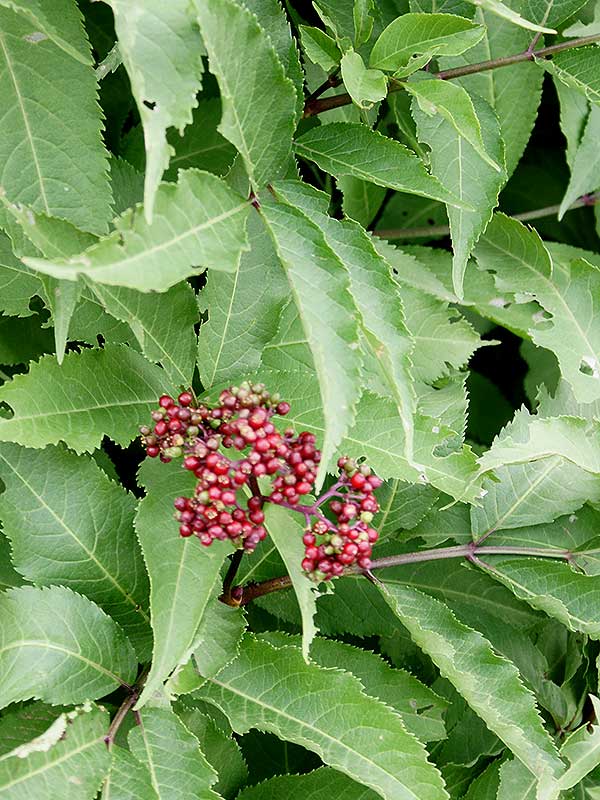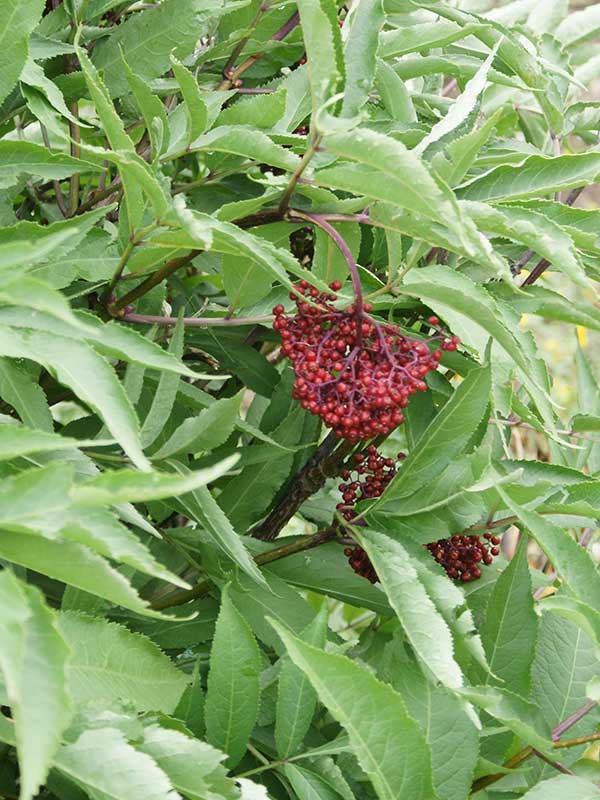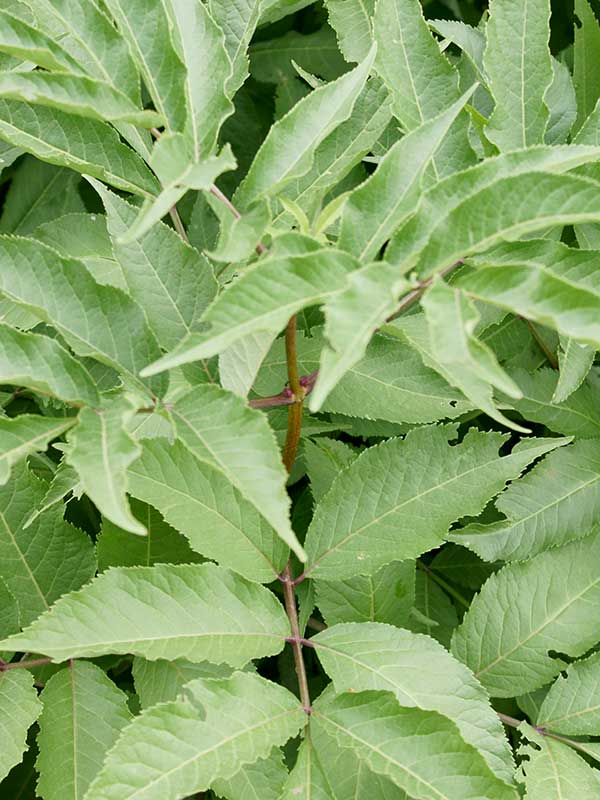Sambucus nigra / common elderberry
- shrub or small tree blooming in late spring
- leaves opposite
- pinnately compound with up to 9 leaflets with serrated edges
- flowers are white, 5-petaled, in flat-topped clusters of clusters
- “berries” are red or dark blue/black in August; often drooping when mature
Also known as: black elderberry, American black elderberry, black elder, Canada elderberry
Elderberries including Sambucus nigra are deciduous shrubs or small trees, standing up to 10 feet tall. Although they are not common in the Valley and surrounding area – or in Idaho – they are here. The only plant with which black elderberry can be confused is Sorbus scopulina / western mountain ash. Once berries begin to form, that confusion goes away.
Elderberry leaves are arranged in opposite pairs, 4-12 in long. They are pinnately compound with five to seven (rarely nine) leaflets, each up to 4 inches long. The leaflets have serrated margins. The young stems are hollow, but develop a white, spongy pith later on. This pith was long used in studies of plant anatomy at the microscope level; they were used to hold leaves and other tissues for hand sectioning.
Elderberry bears large, flat-topped clusters of flat-topped clusters (corymbs) of small white or cream-colored flowers. Each inflorescence is up to 8+ inches wide. The flowers are actually pretty in themselves if you can see them; they are teeny. Each has 5 rounded, spreading petals. The sepals are also creamy-white. They bloom in late spring and are mildly fragrant.
The mature fruit is a berry-like drupe about ¼ inch in diameter. Each fruit contains a few small seeds. The drupes are blue-black, although sometimes red. They are edible only once they have been boiled.
Elderberry grows from a rhizomatous root system and spreads by suckering. It is usually in moist sunny spots and along the edges of woodlands. The photos here were taken on the Bannock Trail at Grand Targhee in early August.
Interesting bits – The color of elderberries is due to anthocyanidin pigments that give elderberry juice a blue-purple color. Diluted with water, this is red. The juice is used to make wine; the flower heads are used to make cordial. In addition, the juice, with an alum mordant, can be used to dye cloth. If you are not familiar with the kid’s book, Charlie Needs a Cloak, by Tomie dePaola, you should be. It is available on Amazon but is, alas, not in the Victor and Driggs libraries. His new cloak is dyed with elderberries.
But be aware and careful! Ripe elderberries are poisonous in their raw state while unripe berries, seeds, and all green parts of the plant contain cyanogenic glycosides, and are, therefore, even more poisonous. Cyanogenic means that when you eat them, they release cyanide. You might turn blue, but that is an effect of lack of oxygen, not of being dyed. Without turning blue, you may experience nausea, vomiting, cramps, diarrhea and weakness. Tea made from elderberry flowers and leaves is also toxic.
On the other hand, the berries are edible after cooking and are used to make jams and jellies.
| Color | |
|---|---|
| Family | |
| Blossom size | |
| Inflorescence size | |
| Inflorescence type | |
| When? | |
| Where? |


